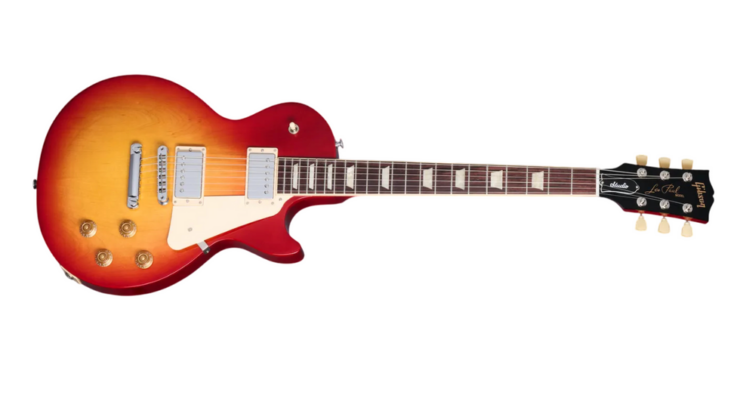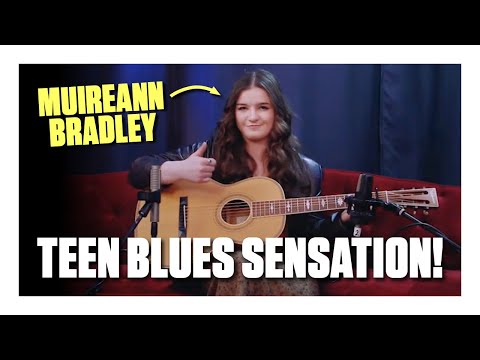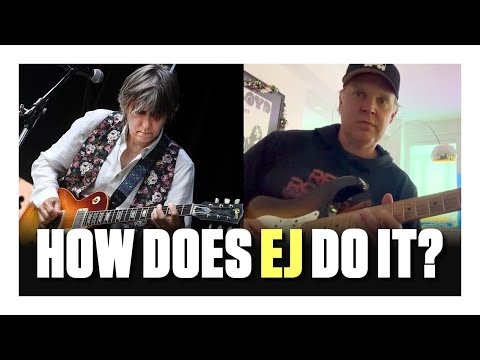
This post was originally published on this site

Effectively a no-frills version of the Les Paul Standard, the Les Paul Studio has been a fixture of Gibson product rosters since 1983, which says something about the enduring, and robust, appeal for affordable alternatives to the iconic original. The notion behind the original Les Paul Studio was that it didn’t matter how a guitar looked when you were using it in the studio. Who cares about a flamed top, binding, inlays, and other deluxe cosmetics in a session as long as it sounds and feels good?
In some respects, the newest Les Paul Studio adheres to that philosophy and shares many trademark elements with its Studio forebears. There’s no body binding and a silkscreened, rather than inlaid mother-of-pearl headstock logo, for instance. But Gibson also carefully and cleverly threaded the needle between economy and luxury with this release, including several desirable Les Paul features that have occasionally been excluded from the budget model over the years.
Classic Contours
Most readers with a cursory knowledge of the Les Paul format will know this guitar’s basic specs already: mahogany body with maple top, mahogany set neck, 24.75″ scale length, 12″ fingerboard radius, and dual humbuckers. The Les Paul Studio hasn’t always followed the Standard’s, um, standard quite so religiously. Studios from the first few years of the model’s existence, for example, were made with alder bodies and slightly thinner than the usual Les Paul depth. The newest version, too, veers from formula a bit by using Gibson’s Ultra Modern weight relief scheme, which slims the guitar’s weight to about 8.5 pounds. The carved maple top, however, is plain and not heavily figured, which keeps costs down. Even so, it looks good under the bright-red gloss nitrocellulose lacquer finish on our cherry sunburst example. (Wine red, ebony, and the striking blueberry burst are also available).
While the binding-free body and less-heavily figured top hint at the Studio’s “affordable” status, Gibson didn’t skimp on dressing up the neck. It has a bound rosewood fretboard with trapezoidal pearloid inlays rather than the dots many early versions featured. For many players, though, the fretboard binding is more than cosmetic—the ever-so-slight extra width also lends a more vintage-like feel, so it’s really nice to have it here. The neck itself is carved to Gibson’s familiar and ubiquitous Slim Taper profile, a shape inspired by early-’60s necks that were generally thinner and flatter than the ’50s profiles.
“Gibson carefully and cleverly threaded the needle between economy and luxury with this release.”
Hardware largely adheres to contemporary norms for all but vintage reissue-style Les Pauls: tune-o-matic bridge, aluminum stopbar tailpiece, Kluson-style Vintage Deluxe tuners with Keystone buttons, and larger strap buttons (yay!). Another feature here that some past Studio models lack is the cream pickguard, which contributes to the ’50s-era aura. There’s also a matching cream toggle switch washer in the included gig bag if you want to add another vintage touch.
Studio Play Date
Under the chrome pickup covers live two wax-potted, alnico 5 Gibson Burstbucker Pros, which average about 8.3k-ohm resistance. They’re wired with a traditional Gibson four-knob complement and three-way switch, but the volume knobs are push-pull controls that enable coil tapping, which broadens the tone palette considerably.
Playability is a high point. The fine setup, smooth fret work, and well-executed binding nibs lend a very visible sense of quality, but you can hear the payoff in the form of the well-balanced, resonant ring when you strum the guitar unplugged. When you turn it up, though, it’s classic Les Paul. Whether I paired it with a Vox-style head and 1×12, a Fender Bassman with a 2×12 cab, or numerous presets on a Fractal FM9, the Studio didn’t yield any negative surprises, but plenty of positive ones.
The Burstbucker Pros have plenty of bite. But most impressive for a Les Paul at this price, is the excellent clarity and articulation you hear along with strong hints of PAF-descendent grit and swirling overtones that lend heft and personality in cleaner amp settings. There’s none of the mud or mid-heavy boominess that you hear in some Les Pauls, even though the characteristically beefy Les Paul overdrive is present in abundance, helped, no doubt, by the slightly hotter-than-vintage-spec Burstbucker Pros. The Studio matches up well with a cranked amp or an overdrive. And while to some ears the Studio might not sound as creamy-complex or lush as high-end, vintage-leaning re-creations of a ’59 Standard, it will crunch, wail, and sing with aggression and civilized authority.
As for the split-coil tones, they don’t sound quite like genuine single-coil pickups, even though Gibson employs the nifty trick of wiring a capacitor in series with the switch leg—dumping the second coil to ground to keep a little girth in the signal. But generally, they will deliver the lighter jangle and chime that some humbuckers struggle with and lend a lot of versatility.
The Verdict
From fit and finish, to playability, to sonic virtue and versatility, the new Les Paul Studio is a genuine Gibson USA-made Les Paul that offers a lot of value. It does just about everything a player working within this price range could want from a Les Paul Standard with a load of style to boot.
Gibson Les Paul Studio Electric Guitar – Cherry Sunburst
Les Paul Studio, Cherry Sunburst




